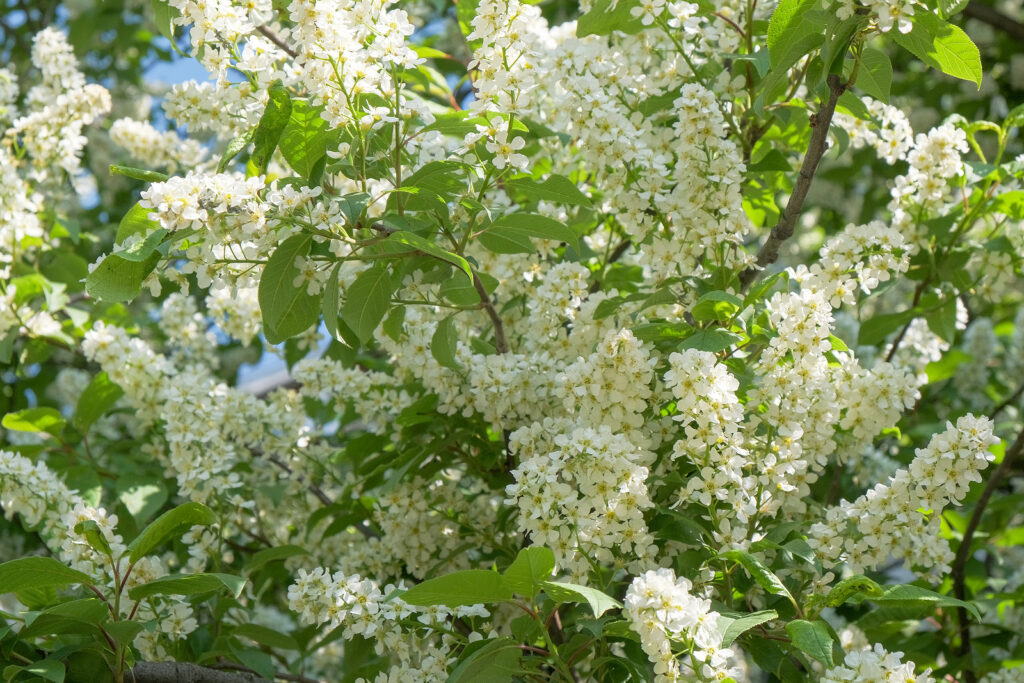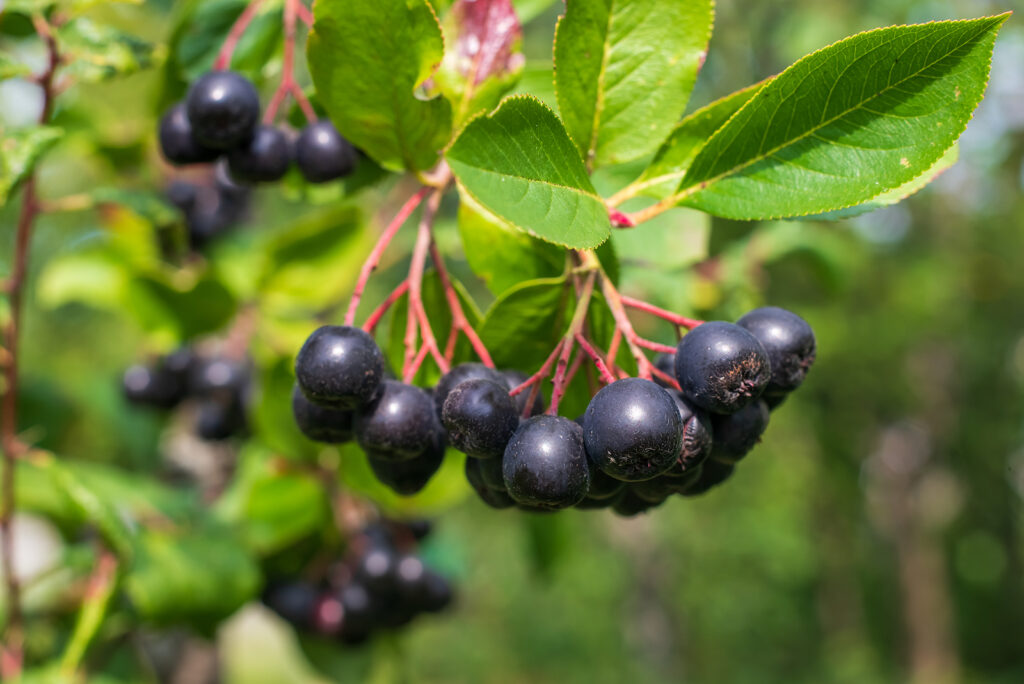Aronia — commonly called Chokeberry–are grown for their white, sometimes pink-tinged flowers borne in late spring. Aronia are also grown for their stunning fall colors and winter berries.
Aronia are tough, undemanding shrubs useful as fillers or background plantings. They can survive on much or little water and tolerate a wide variety of soils.
Aronia can grow leggy so it can be underplanted with small perennials or annuals.
Aronia is a genus of two species of deciduous, suckering shrubs. Aronia are native to woodland clearings, scrub, and swamps of Eastern North America and grow as far north as Canada. They are sometimes classified as Photinia.

Get to know Aronia
- Plant type: Deciduous shrubs
- Growing zones and regions: Zones 4 to 10.
- Hardiness: Hardy to Zone 4
- Height and width: 6-9 feet (1.8-2.7m) tall and wide
- Growth rate: Medium
- Form and habit: Upright spreading shrubs
- Foliage: In the fall the 2-3 inch (5.1-7.6cm) smooth, oval leaves with either white-green or gray-green tints that turn brilliant red
- Flowers: 2 inch (5.1cm) clusters of .5 inch (1.3cm) white or pink flowers
- Bloom time: Late spring
- Fruits: Bright masses of tiny berries, less than .5 inch (1.3cm) in diameter) that turn red in early fall, and have an astringent taste—hence the name chokeberry (even the bird do not like them)—that remain on the shrub until early winter
- Uses: Shrub borders, fillers, or background plantings; ideal for naturalizing, if you have space to accommodate their inevitable spread
- Common name: Chokeberry
- Botanical name: Aronia
- Family name: Rosaceae
- Origin: Scrub, woodland clearings, and swamps of Eastern North America
Where to plant Aronia
- Plant Aronia in full sun for abundant fruits and brightest foliage, but will tolerate light shade.
- Plant Aronia in almost any soil.
When to plant Aronia
- Set container-grown Aronia in the garden in spring or autumn.
- Plant Aronia seeds in autumn.

Planting and spacing Aronia
- Space Aronia 6-9 feet (1.8-2.7m) apart.
How to water and feed Aronia
- Give Aronia much or little water.
- Feed Aronia with an all-purpose organic fertilizer in spring.
How to care for Aronia
- Aronia rarely needs pruning, but you can prune back by a third or more to control spread and stimulate new growth.
Aronia pests and diseases
- Aronia is susceptible to attacks by insects and diseases that disfigure other members of the rose family. Leaf spots and rust are common.
Aronia propagation
- Propagate Aronia by digging up and replanting underground offshoots known as suckers, from softwood cuttings of young growth taken in spring or by forcing a branch to grow roots by the method known as ground layering.
- Sow seed in a seedbed in autumn.
Aronia varieties to grow
- Aronia arbutifolia, Red chokeberry, clumping shrub to 6-8 feet (1.8-2.4m), with many erect stems bearing shiny foliage that is rich green above, paler beneath. Fruits are clustered, .3 inch (.8cm) wide, brilliant red, long-lasting. Fall foliage is also bright red; plants tend to color early.
- A. arbutifolia brilliantisima, Brilliant chokeberry, grows to a similar size but has more or brighter red fruit and leaves than the regular species.
- A. melanocarpa, Black chokeberry, grows only 1.5-3 feet (.5-.9m), has black berries that ripen in late summer and drop off soon thereafter. The leaves are smooth, shiny, and pale green.
- A. prunifolia, Purple chokeberry, bears shiny purple berries that ripen in autumn but fall off after the first frost. It grows 10-12 feet (3.1-3.7m) tall and makes a fine shrub where a tall screen planting is desirable.















